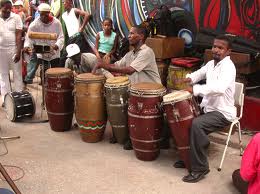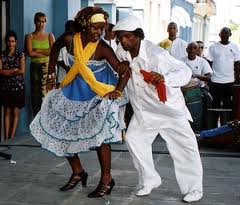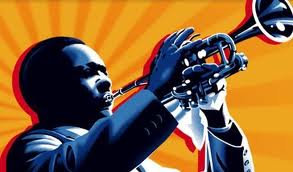|
"I had never heard anything that contagious, warm, lively and so full of heartfelt experience. I remember I heard that rough cassette over and over that night." - Wim Wenders, director of the documentary "Buena Vista Social Club" (1998), after hearing the rough mix of the synonymous album with Ry Cooder

Ry Cooder´s music proyect, the "Buena Vista Social Club", was an enormous success. Its release renewed interest in Cuban music all over the world. It stands, however, in a long line of traditional Cuban music (and dance). In fact, tiny though the island may seem, Cuban music takes a dominant place in Latin American music.
Between Cuba´s discovery in 1492 and the abolition of slavery about 300 years later, colonist were sure to bring in over a million slaves, mainly African natives from Angola, Congo, and Nigeria. Cuba´s musical wealth today is the result of the gradual fusion of the rhythm, dance, and music African slaves brought with them, and their fusion with the musical traditions of the colonists.
Simple though this process might seem, today Cuba hosts an enormous cultural variety further influenced by genres from Haiti, the United States, and Jamaica. To help you disentangle the knot of genres, subgenres, dances, and styles, here are some of Cuba´s most important musical movements:
Son
Son, literally meaning "sound", is probably the most typical music from Cuba. It originated in the early 1900s in the poorer east of the island, and is a kind of popular dance music. Son is a traditional and indigenous music style, as throughout the 20th century it remained relatively uninfluenced by other styles.
Big names in Son are Ignacio Pineiro, the Trio Matamoros, Beny Moré, and more recently the Buena Vista Social Club. Son also constitutes the foundation of many kinds of Cuban salsa and jazz.

Rumba
Rumba is a type of music most clearly influenced by African music. Its two main ingredients are percussion and vocals, and this music style dominates Carnival celebrations in Santiago de Cuba. The Muñequitos de Matanzas are a big name in the rumba scene.
Danzón
Danzón is played by so-called orquestas and originates from Haitian and French immigrants that came to Cuba in the late 19th century. It constitutes the foundation of such later popular styles as the cha-cha-chá and the mambo, which later became world-wide hits.
Boleros and Trovas
Boleros are romantic ballads, whereas trovas (especially the nueva trova) is a politically motivated kind of ballad from after the Cuban Revolution. Big names here are Carlos Varela, or Silvio Rodriguez.

Cuban Jazz
Cuban Jazz is internationally renowned, and stands out for its elaborate use of African and Cuban elements. Check out Chucho Valdés and Gonzalo Rubalcaba to enjoy the best Cuban jazz or visit Cuba's famous annual Havana Jazz Festival.
Cuban hip-hop and rap
Cuban hip-hop took form in the early 1980s at the same time as this music style started to take over the United States. Although illegal, Cuban youth could listen to Miami-based radio stations on homemade antennae. Today hip-hop and rap are well represented in Cuba, with an annual Cuban Rap Festival, and even a Cuban Rap Agency. Government-run, ofcourse. NG La Banda plays a mix of funk and hip-hop, and is hugely popular on Cuba.
|